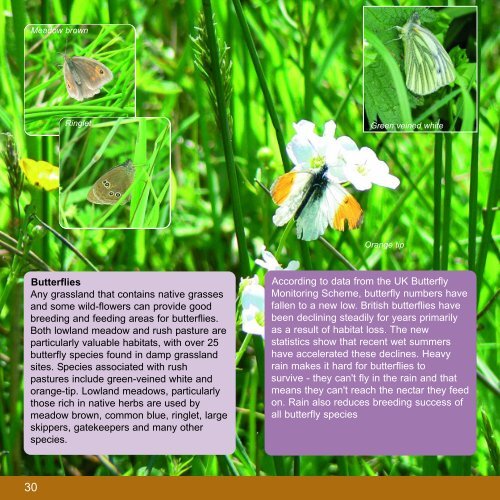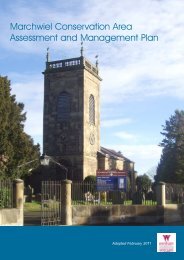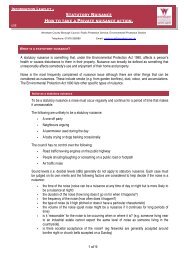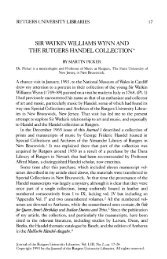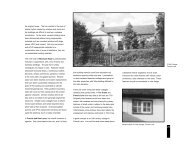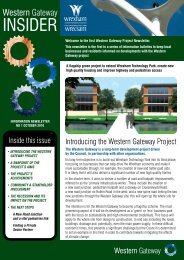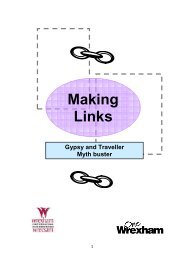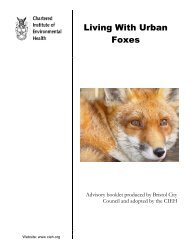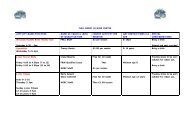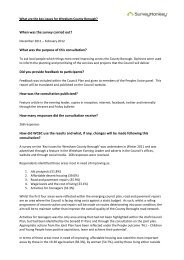Biodiversity in Wrexham - Wrexham County Borough Council
Biodiversity in Wrexham - Wrexham County Borough Council
Biodiversity in Wrexham - Wrexham County Borough Council
Create successful ePaper yourself
Turn your PDF publications into a flip-book with our unique Google optimized e-Paper software.
Meadow brown<br />
R<strong>in</strong>glet<br />
Green ve<strong>in</strong>ed white<br />
Orange tip<br />
Butterflies<br />
Any grassland that conta<strong>in</strong>s native grasses<br />
and some wild-flowers can provide good<br />
breed<strong>in</strong>g and feed<strong>in</strong>g areas for butterflies.<br />
Both lowland meadow and rush pasture are<br />
particularly valuable habitats, with over 25<br />
butterfly species found <strong>in</strong> damp grassland<br />
sites. Species associated with rush<br />
pastures <strong>in</strong>clude green-ve<strong>in</strong>ed white and<br />
orange-tip. Lowland meadows, particularly<br />
those rich <strong>in</strong> native herbs are used by<br />
meadow brown, common blue, r<strong>in</strong>glet, large<br />
skippers, gatekeepers and many other<br />
species.<br />
Accord<strong>in</strong>g to data from the UK Butterfly<br />
Monitor<strong>in</strong>g Scheme, butterfly numbers have<br />
fallen to a new low. British butterflies have<br />
been decl<strong>in</strong><strong>in</strong>g steadily for years primarily<br />
as a result of habitat loss. The new<br />
statistics show that recent wet summers<br />
have accelerated these decl<strong>in</strong>es. Heavy<br />
ra<strong>in</strong> makes it hard for butterflies to<br />
survive - they can't fly <strong>in</strong> the ra<strong>in</strong> and that<br />
means they can't reach the nectar they feed<br />
on. Ra<strong>in</strong> also reduces breed<strong>in</strong>g success of<br />
all butterfly species<br />
30


